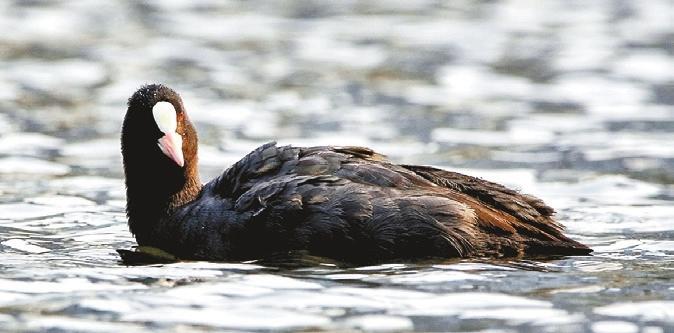
THE Eurasian coot (Fulica atra), a medium-sized waterbird, has a black plumage with a subtle iridescent sheen. It has a robust body, a white bill with a distinctive white frontal shield, and vibrant red eyes. Its legs are strong and equipped with lobed toes, enabling it to swim and navigate through the water with agility. This adaptable species can be observed in various aquatic habitats, including lakes, ponds, marshes, and even urban water bodies such as parks and reservoirs. It thrives in freshwater and brackish environments. Although the Eurasian coot is primarily a resident species, the individuals found in Shenzhen are occasional travelers. They establish year-round territories within their preferred habitats and do not undertake long-distance migrations. However, it may occasionally make short-distance movements within the region in response to changes in food availability or habitats. Its breeding season typically occurs during spring and summer. Mated pairs engage in elaborate courtship displays and are usually aggressive toward rivals. Nest-building is a collective effort, with both parents participating. The female lays a clutch of up to 10 eggs, which she incubates for about three weeks. The hatchlings are covered in black down and can leave the nest after a short time. Both parents contribute to the care and protection of the young, providing them with food and guidance until they are independent. The omnivorous bird feeds on various plants, including aquatic vegetation, seeds, and fruits. It also actively forages for small aquatic invertebrates, such as insects, mollusks, and crustaceans, helping regulate their populations and ensuring a balanced ecosystem. They serve as prey for larger predators, and contribute to their habitats’ overall biodiversity. | 
